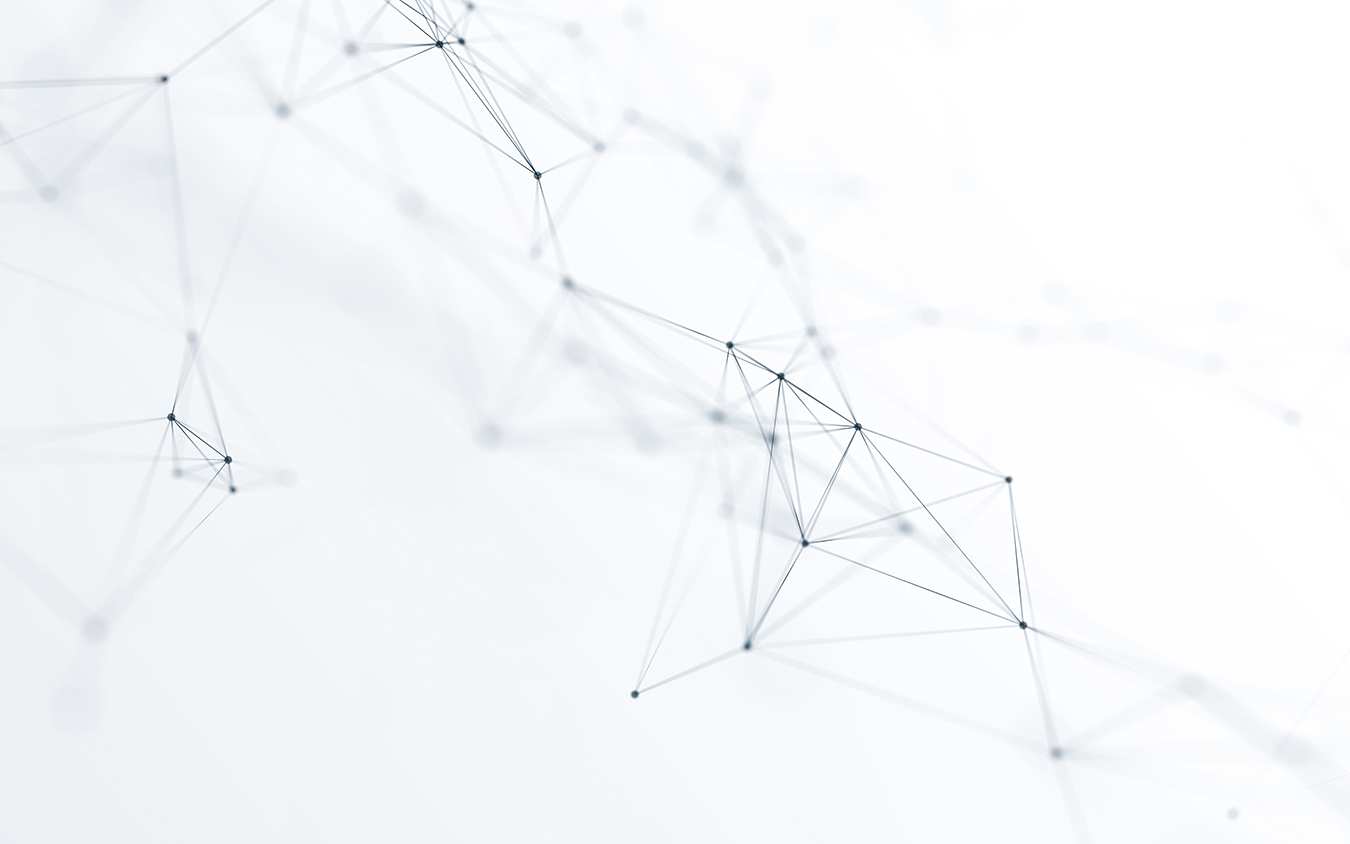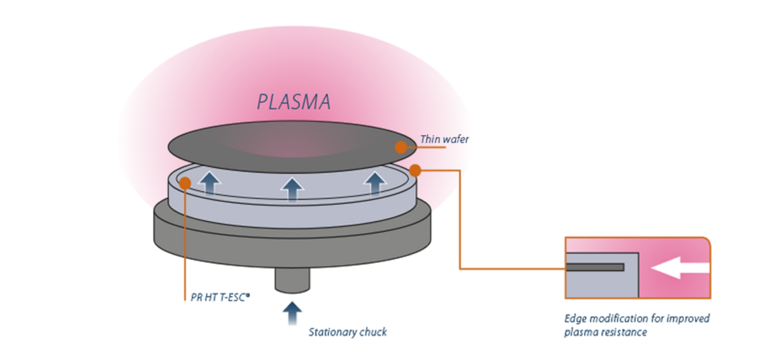
protec carrier systems
machinery
(MEMBER OF THE T-ESC® FAMILY)
PR HT T-ESC®
The Plasma-Resistant High-Temperature Transfer Electrostatic Carrier (Litho HT T-ESC®) is our specifically designed solution for thin wafer handling support during plasma and ion implantation processing. It is based on our HT T-ESC®. Due to a special design interaction between T-ESC® and plasma/ion bombardment is avoided. Therefore, the wafer is always securely chucked on top of the PR HT T-ESC. In addition, the HT T-ESC family is compatible with existing stationary electrostatic chuck solutions inside the process chambers and has a very high heat transfer rate, so that the cooling during processing is still present for the device wafer.
Typical Applications
-
Solution for thin wafer handling support during plasma and implantation processes
-
Compatibility with existing handling systems (transport cassettes, vacuum, Bernoulli or mechanical end effectors, etc.)
-
Ultra low contamination
-
High flatness
-
Outgassing free
-
Reusable
-
Sizes from 2" to 12", customized shapes and features possible
Recommended Processes

Electro Plating
Electro Plating is a method to form layers out of a liquid phase onto a substrate. The desired regions are masked and the substrate is dipped into the bath. Usually, the backside is covered and by applying an electrical field between the substrate and the liquid, a layer forms on the uncovered surface of the substrate.
Handling
During the wafer processing the wafer needs to be transferred back and forth from the cassettes to the tools and also inside the tools from one station to the other. For fragile substrates this is already challenging, because they tend to break or get cracks, which can lead to future breakage. Also the bowing of thinned substrates brings a lot of trouble for all tooling because they are usually not designed for this very special operation. Temporary bonding with our T-ESC® is a great help here as the processing tools only recognize a standard wafer and trouble with handling. Therefore, the wafer breakage is eliminated.
Ion Implantation
The substrate is bombarded with ions which will stop inside the crystal structure and form doped regions. Usually, this is only wanted in specific parts of the wafer, so the rest is covered by a mask and the depth of the ions can be controlled, as well.
CVD: Chemical Vapor Deposition uses gases to deposit layers on the substrate. Depending on the specific type of CVD different temperatures and materials are used, leading to layers which vary in density and stability according to CVD type. The higher the temperature, the better the layer properties and usually the longer the processing time. However, not all substrate materials or already built structures can withstand the high temperatures. So cooling is needed for the substrate or choosing a low temperature CVD process type.
PECVD: Plasma Enhanced Chemical Vapor Deposition usually uses temperatures which are lower than in a pure CVD step. A plasma leads to a split of the reactive gases, which are then deposited on the substrate.
PVD/Sputter
Basically processes starting with a solid or liquid phase forced into the gas phase and building a solid again are called Physical Vapor Deposition. Sputtering is the most famous among them. Ions are accelerated and hit a target material. The ion bombardment results in free particles from the target material. These particles form a conformal layer on the substrate. There are different methods for the Sputtering process depending on the target material and the desired layer properties, e.g. by adding reactive gases into the chamber, a combination of target material and gases build the layer on the substrate. Another option is to heat a material until it gets into the gas phase and then guide it to the target substrate. This is called evaporation.
Plasma Clean / Ashing
Plasma Clean or Ashing is usually used to clean the substrate's surface from residues of resist or other contamination. The gas is ionized and reacts with the resist forming ash which is pumped out of the chamber by vacuum pumps.
Reactive Ion Etching is a process where ions are accelerated onto the substrate, hitting the surface and creating free particles. Depending on the chosen gases the ions are more reactive to different materials generating a selective process. However, the bombardment is creating damages, which can lead to a healing process afterwards.
The Deep Reactive Ion Etching is usually a mixture of etching and passivation layers to generate deep and sharp holes or pillars. The etching and passivation is done in a sequence.
